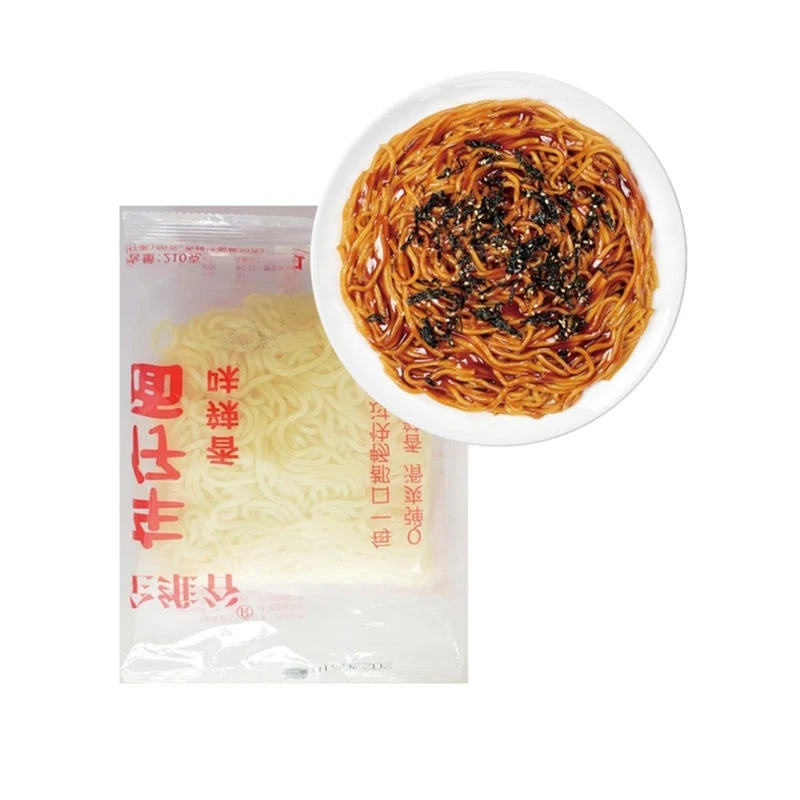What Ingredients Are Used to Make Udon Noodles?
What is an Udon Noodle Made Of?
Udon noodles are a beloved staple of Japanese cuisine, known for their thick, chewy texture and versatility in various dishes. While their simple appearance may not reveal much about their ingredients, these noodles are crafted from just a few key components that come together to create the characteristic flavor and feel of udon.
The primary ingredient in udon noodles is wheat flour. Unlike other types of noodles that may utilize rice or other grains, udon is made almost exclusively from wheat. The type of flour used is important; typically, a high-gluten flour is chosen to give the noodles their chewy texture. This is akin to the flours used in bread-making, which requires higher gluten content to achieve elasticity. In Japan, a specific grade of wheat flour known as udon flour is sometimes used, although standard all-purpose flour can also work for homemade udon.
The second essential ingredient is water. Water is crucial not only for hydrating the flour but also for ensuring the right consistency of the dough. The ratio of water to flour can vary, but it usually ranges from 30% to 40% in relation to the flour's weight. The addition of water ultimately determines the texture of the noodles; too much water may make them too soft, while too little can result in a dry, brittle noodle.
The final ingredient is salt, which serves multiple purposes. Salt enhances the flavor of the noodles, bringing out the natural sweetness of the wheat. Additionally, salt strengthens the gluten structure, contributing to the elasticity and chewiness of the finished product. The precise amount of salt can vary depending on individual recipes, but it is typically about 2-3% of the weight of the flour used.
what is an udon noodle made of

While those are the core ingredients, the process of making udon noodles is where the magic happens. The method involves combining the flour, water, and salt to form a dough. This dough is then kneaded for an extended period, often up to 10 minutes, until it becomes smooth and elastic. In traditional Japanese methods, the dough can also be pounded underfoot, providing a historical connection to the craftsmanship of noodle-making. After kneading, the dough is allowed to rest, which helps to relax the gluten and makes it easier to roll out.
Once the dough has rested, it is rolled out to the desired thickness—usually around 1/4 inch—and then cut into long strips. The width of the strips can vary depending on personal preference, but they typically range from 4 to 6 millimeters. After cutting, the noodles are often dusted with flour to prevent sticking and are ready to be cooked.
Cooking udon noodles is a straightforward process. They are typically boiled in water for about 8-12 minutes until they reach a tender yet chewy consistency. They can then be served in various ways, such as in a hot broth, cold with dipping sauces, or stir-fried with vegetables and proteins.
In conclusion, udon noodles are made from simple ingredients—wheat flour, water, and salt—but the art of crafting these noodles elevates them to a dish appreciated by many. Their unique texture and ability to absorb flavors make them a versatile choice in both traditional and contemporary Japanese cuisine. Whether enjoyed in a comforting bowl of noodle soup or as part of a noodle salad, udon holds a special place in the hearts and stomachs of food lovers around the world.
-
Is Whole Wheat Pasta Healthy?NewsMay.30,2025
-
Are Soba Noodles Good for Weight Loss?NewsMay.30,2025
-
Are Buckwheat Soba Noodles Healthy?NewsMay.30,2025
-
Are Buckwheat Soba Noodles Gluten Free?NewsMay.30,2025
-
Are Buckwheat Noodles Good for You?NewsMay.30,2025
-
A Healthy Way to Savor Soba and Spicy FlavorsNewsMay.30,2025
-
What Are Lanzhou Noodles?NewsMay.30,2025
Browse qua the following product new the we

















































































































